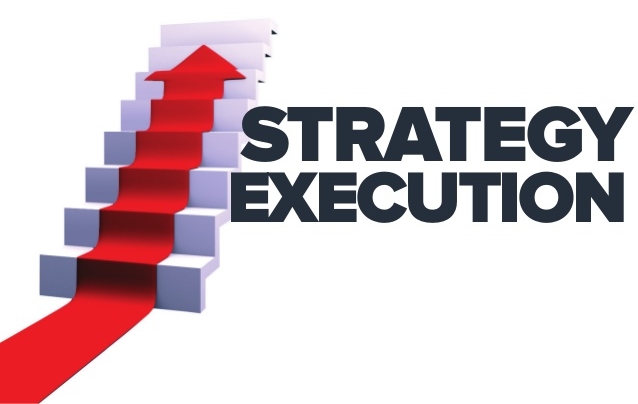The Link between Strategy & Execution
We all have amazing strategies to change our life. But the truth is that a strategy is worthless without execution. If we do not the have the ability to put the strategy into action it becomes practically worthless. So what makes a good strategy? It should be easy to execute.

That's why the key to change is to focus on the execution of your strategy rather than the strategy itself.
Three Drivers of Success
There are 3 primary drivers of results in life.
They three are Luck, Strategy and Action.
2 of them are under our control, but they actually have to work together.
In other words, a strategic plan to change can be grand. But we need a concrete way to implement it by taking into account two simple factors. The first is making it easy (ability) and the second is making it rewarding to do (motivation).
The Fogg Behaviour Model
BJ Fogg, a renowned social scientist, invented a formula he calls B=MAP: "Behaviour (B) happens when Ability, Motivation and a Prompt come together."
This means that when a prompt or cue is given, actions that fall on the right side of the action line will be executed. On the other hand, actions that fall on the left side of the action line will fail.

Put differently, Ability and Motivation decide whether or not we execute a certain behaviour at a certain moment in time.
Ability
Ability indicates how easy it is for the behaviour to be executed. This can work in your favor for a good habit but against you for a bad habit:
For example, taking the stairs each time isn't a problem, and easy to do. But taking 20 stairs isn't. Then the behaviour becomes too hard to do it all at once.
There is a similar case for bad behaviour. For example, it's easy to check Facebook, Twitter and Instagram for a short while. Our phone is almost always near us and opening an app is a few clicks away. But that's also what makes it so easy to overdo it all the time. So the easy ability also feeds the loop of bad habits.
In other words, the ability of the behaviour defines how easy or how hard it is to do something in a certain moment when we obtain a prompt to act.
Motivation
Motivation helps you execute more difficult habits because there is a reward that 'motivates ' you. Unfortunately motivation can be high in one moment and low in another. This doesn't make it a consistent force that we can count on to drive our actions.
Motivation can originate from 3 different factors:
- Seeking pleasure or avoidance of pain
- Wishing for belonging or avoiding possible rejection
- Having hope or fear
All these elements can motivate us one way or another. But we can can sure of one thing:
As long as the motivation is bigger than the effort we have to invest, we're most likely to execute the behaviour.
Focus on Successful Execution
The updated M-BAP model below displays two red dots that indicate that either motivation or ability is too low and we won't execute. So if we desire a successful response we either need to provoke more motivation or make it easier to do.

Strategy 1. Increase motivation for the behaviour
There will be natural moments where the motivation to do hard things won't be present. Thus, the goal here is to increase motivation by having reasons not to quit.
There are various methods that can be used to hack your mindset and increase motivation - such as loss aversion, peer accountability and ritual creation. All these methods focus on creating GRIT. You can read about those here:
Strategy 2. Decrease the difficulty of the behaviour
The second strategy to execute your behaviour is to lower the difficulty of it. Difficult behaviour can be made easier by prioritizing tiny actions or a system over the actual result.

- Run outside for 10 minutes instead of the full hour you promised to yourself yesterday.
- Since you're tired, just read 2 pages of a book just so you can mark it off for the day.
- Go to the park with your workout clothes or a band and see what happens. If you condition it well into your system it can provide you with a sudden 'ability' to move.
- Just do 5 minutes of any task because something is better than nothing.
In this sense we can use goals as a tool to plan progress, while using a system to make consistent progress:
"Massive action is not about huge goals, huge plans, or huge leaps, but it’s about consistency. And what brings consistency? Small, tiny, simple and sustainable actions. "
- Dean Yeong
Becoming just 1% better each day
Becoming 1% better each day is possible when we start implementing tiny actions and identity habits.

Stuck in the Status Quo of Routine?
"An object at rest stays at rest and an object in motion stays in motion with the same speed and in the same direction unless acted upon by an unbalanced force."
- Isaac Newton
With tiny actions, we can break out of the status quo and break through the resistance of our normal routine.
With tiny actions, we can purposefully and intentionally nudge ourselves into the right direction. So don't stick to the high level vision only.
Start creating a strong link between Strategy and Execution.
Sources
www.bjfogg.com


Comments are closed.